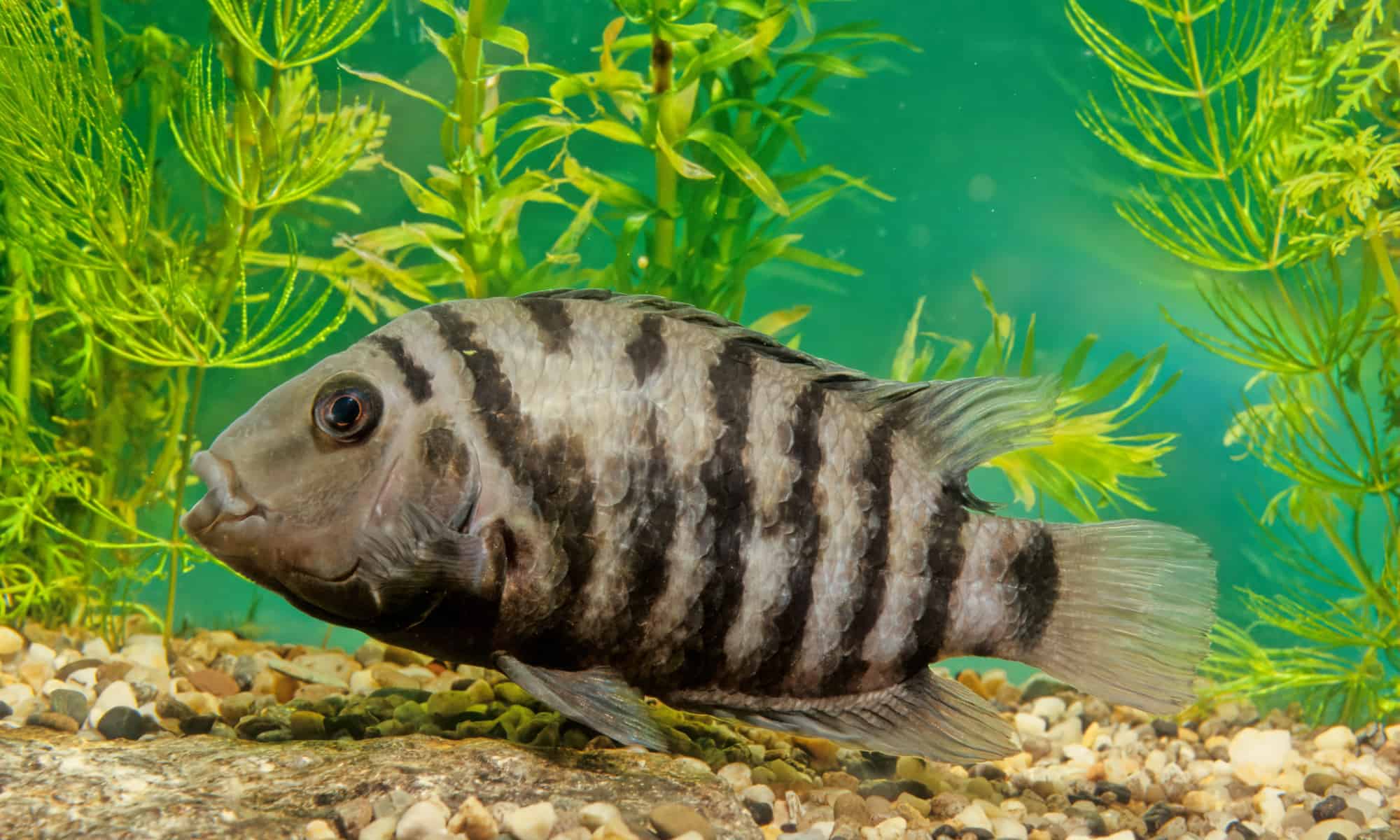As a popular aquarium fish, convict cichlids are fascinating to watch and get along with many other species of fish. They are sometimes called zebra cichlids for their black and white stripes. There is some variation in color, although some now consider fish of different colors as a different species altogether distinct from the convict cichlid. They all share the same vertical black stripes, however, which is what inspired the convict portion of their name. Males and females look similar although they can differ in size. These fish are part of the Cichlidae family of fish and live in Central America in the wild. Because they are popular in aquariums, however, these fish are found all over the world.
Convict cichlids are known by the scientific name Amatitlania nigrofasciata. In the wild, these fish eat plants and algae as well as some smaller fish and crustaceans. They can also eat insects and even worms. When kept in a tank, convict cichlids are happy with most fish flakes and food, although you should be sure to provide a varied diet. They will eat plants in the tank, a consideration that might keep you from putting them in their environment.
One of the reasons why these fish are so fascinating to watch is their attachments to mates. They are monogamous and will form a bond with their mate. Many owners choose to adopt a pair of convict cichlids when young. In these cases, the fish will often form a bonded pair. Because they can live up to 10 years or more, you’ll be able to see their relationship blossom.
After they have eggs, both parents watch over the eggs and later the larvae and fry, or baby fish, until they are grown and independent. The females tend to focus on caring for the eggs and the males tend to keep predators away from the eggs. The behavior of cichlids makes them very interesting to watch and study.
Things to Remember When Picking Tank Mates for Convict Cichlids

Convict cichlids are very territorial when it comes to protecting their eggs.
©Deanpemberton / Creative Commons – Original
Because they are such protective parents, it’s common for cichlids to get territorial and aggressive when breeding. This can look like biting, chasing, and getting into the space of the intruder. They should stay together as a bonded pair and be kept in a separate tank on their own when breeding. You don’t need to do much to allow them to breed other than put them in a tank together. However, you should have a plan to adopt out the convict cichlid fry once they are old enough to prevent overcrowding and inbreeding in your tank.
Convict cichlids aren’t super picky when it comes to food and will be happy with most fish flakes. They do also eat aquatic plants so it’s generally best to stick with plastic plants for tank decorations to mimic their natural environment. They also like rocks and small caves.
The biggest consideration to keep in mind is whether or not your convict cichlids are breeding. If you have a breeding pair, you might have to avoid any tank mates to keep them from getting aggressive. If the tank mates are dominant over the cichlids, they might be able to live in peace. But be ready to have a separate tank for the lovey fish to prevent any turf wars.
Ideal Tank Mates for Convict Cichlids
1. Oscar Fish
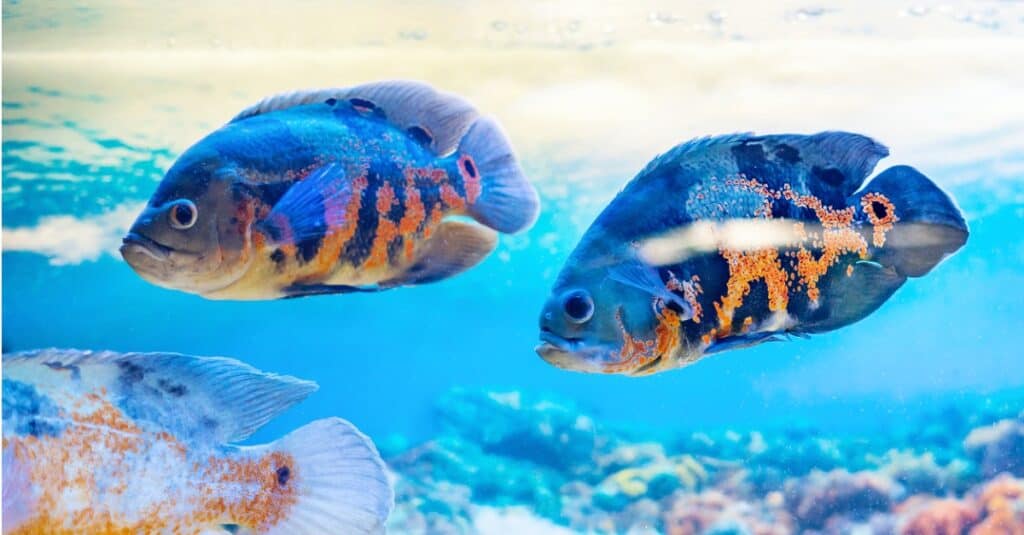
Oscar fish have orange or dark yellow patterns on a black, grey, or dark brown body.
©iStock.com/Andrei310
These orange and black or grey fish are a type of cichlid so they do well with convict cichlids. They can also be quite aggressive and need plenty of space. Oscar fish are quite a bit larger than the convict, sometimes as much as twice as big. They are actually very smart, one of the main reasons that they make such interesting additions to any aquarium. Just make sure that you provide a large tank with places for them to stake their claim, such as a cave or other enclosed space.
2. Plecos
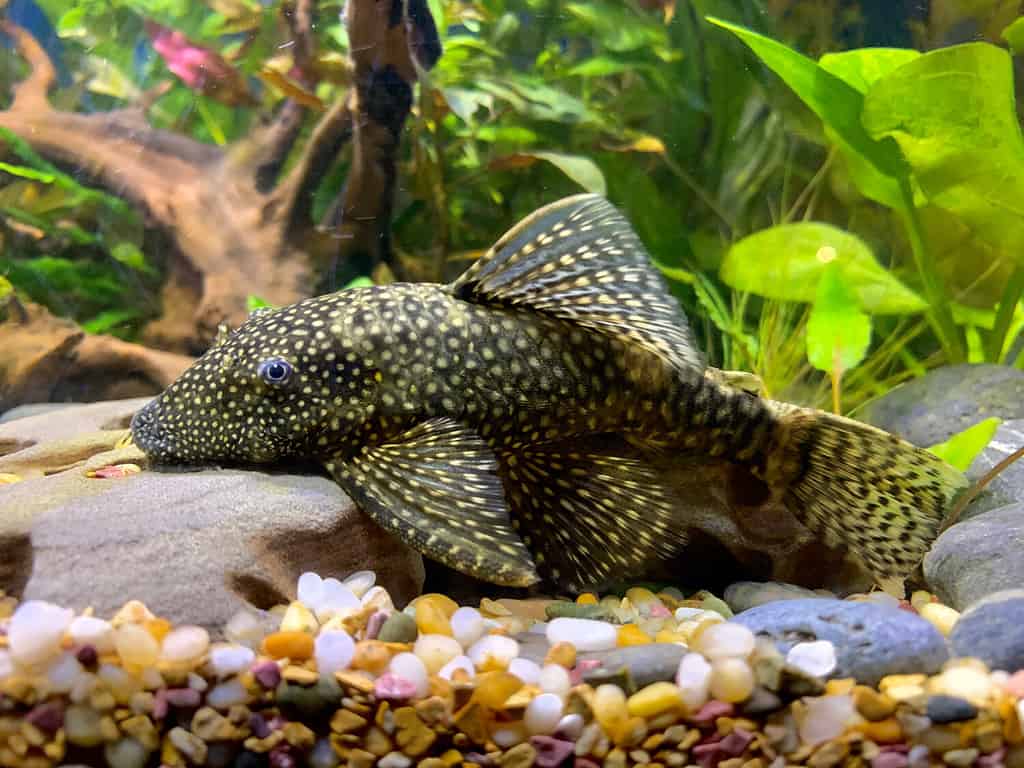
Plecos need a large tank to accommodate their size.
©TTONN/Shutterstock.com
These sucker catfish are popular aquarium fish that get along well with other fish and are easy to care for. They eat just about anything, preferring to scavenge and eat at night. Plecos are nocturnal so don’t be surprised to see less activity during the day. The main thing to consider before adopting Plecos is their size. These fish can get up to 24 inches long! While that makes it less likely that the convict cichlid or another aggressive fish will bully them, it does mean that they need a lot of space and a large tank.
3. T-bar Cichlid
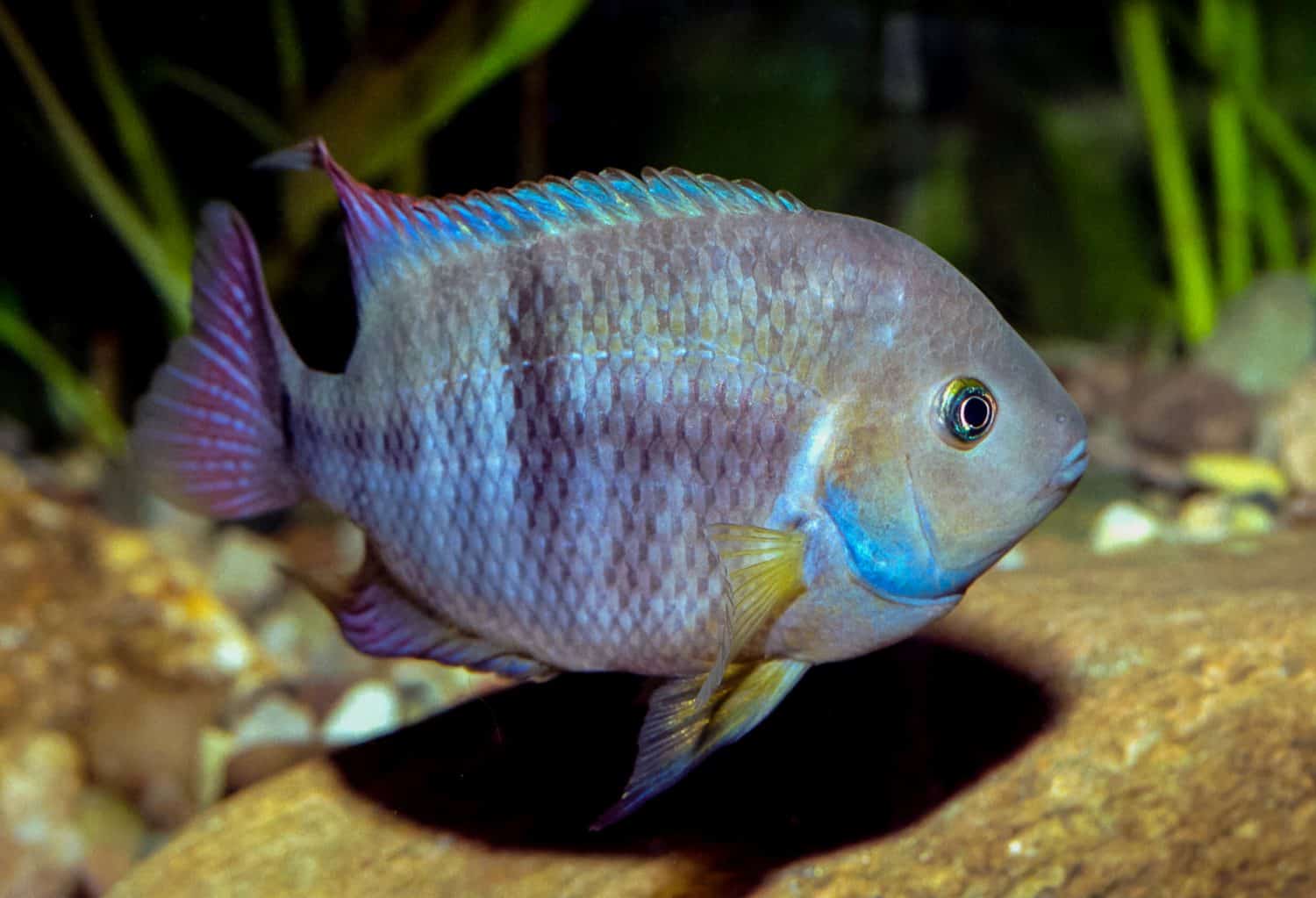
T-bar cichlids have similar needs and temperament to the convict cichlid.
©Andrzej Zabawski/Shutterstock.com
These fish are similar in size to the convict cichlid and make good tank mates for their relatives. They like a similar tank size and temperature. T-bar cichlids aren’t overly aggressive most of the time, although, like the convict cichlids, they can get more aggressive when they are breeding. If you want to keep both T-bar and convict cichlids in the same tank, make sure that it is big enough for two territorial sets of parents. One great option is to have multiple artificial caves in the tank so that each family has its own area to use when breeding and caring for eggs.
4. Clown Loach
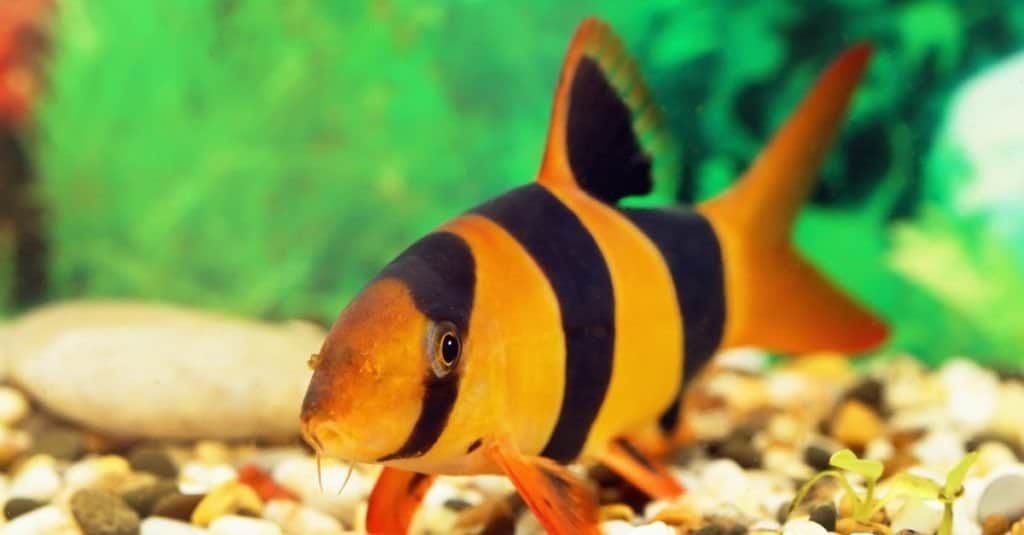
Clown loach have black and orange stripes.
©Grigorii Pisotsckii/Shutterstock.com
These fish are quite a bit bigger than convict cichlids but much less aggressive. They are very peaceful but will keep the more territorial convict cichlids in check by their sheer numbers. Clown loach are schooling fish. You should have at least a small school, ideally between 5 and 10 in a large tank. Keep in mind that if you get these fish when they are juveniles, they might only be a few inches long. But they’ll grow to around a foot each and will need plenty of space to move around.
5. Firemouth Cichlid
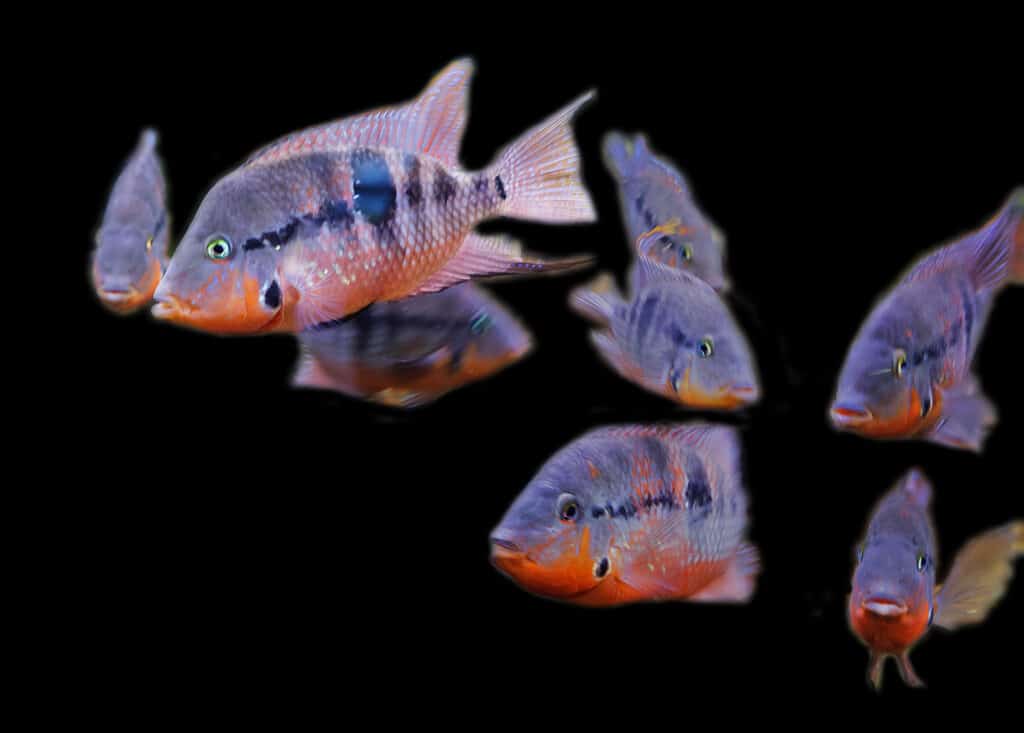
This is a bright representative of the American cichlid family. She is able to inflate the gills, scaring opponents.
©iStock.com/User10095428_393
The firemouth cichlid is a peaceful, laid-back member of the Cichlidae family. They are much less aggressive than the convict cichlid and most other fish on this list. When they do get territorial, it’s during spawning. But even their most aggressive behaviors aren’t anything for the convict cichlid to worry about. They are similar in size to the convict cichlid and also like to have their own space. You can get a single firemouth cichlid but it’s best to adopt them in bonded pairs.
6. Green Terror

Green terror fish are named for their color and disposition.
©Aleron Val/Shutterstock.com
These fish are appropriately named because they are one of the most aggressive on our list. Their coloring is more of a blue-green but makes a startling contrast to the convict cichlid and adds visual interest to any tank. They will go head-to-head with a convict cichlid and both fish soon learn that it’s best to leave each other alone. Green terrors like to dig and like food, so make sure that they have plenty of things to eat. If you don’t, they’ll probably dig in the substrate to look for it. In fact, they’ll probably do that anyway so it’s best to keep the plants floating rather than buried.
Summary of Ideal Tank Mates with Convict Cichlid
| Number | Fish | Scientific Name |
|---|---|---|
| 1 | Oscar Fish | Astronotus ocellatus |
| 2 | Plecos | Hypostomus plecostomus |
| 3 | T-bar Cichlid | Archocentrus sajica |
| 4 | Clown Loach | Chromobotia macracanthus |
| 5 | Firemouth Cichlid | Thorichthys meeki |
| 6 | Green Terror | Andinoacara rivulatus |
Thank you for reading! Have some feedback for us? Contact the AZ Animals editorial team.

